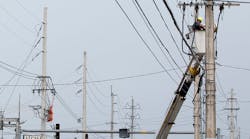Already shell-shocked from the crumbling credit market and its impact on funding for non-residential construction projects, the 400-plus construction executives who attended McGraw-Hill's 2009 Construction Outlook on Oct. 23 in Washington, D.C., got more bad news about 2009 at the meeting from several of the nation's leading construction economists.
Robert Murray, vice president of economic affairs for McGraw-Hill Construction, told the standing-room only audience that he is forecasting a 7 percent decline in total construction for 2009, but said the relatively mild rate of decline (compared to some of the numbers in the housing market and other market sectors) will only hold up if the federal stimulus package passed by Congress works. If it doesn't help the economy, he sees much more trouble. “The basic assumption is that the extraordinary steps to deal with the credit freeze will be successful with time,” he said. “If not the numbers will be lower.” Murray doesn't see any sustained momentum revving up the construction market any earlier than the second half of next year.
The projected 2009 decline of 7 percent to $515 billion in total construction spending follows McGraw-Hill Construction's forecast for a 12 percent decline to $555 billion in 2008. Murray said the speed and scope of the events in September and October were “startling.”
“Tighter lending standards are a major constraint for the construction industry,” he said. “For single-family housing, declines are continuing and showing no sign of an upturn. Home prices are continuing to drop, a 20 percent drop so far this year, and we expect another 10 percent decline through the first half of 2009. Then, things should level off. Store construction has taken the biggest hit; we're looking at a 30 percent decline in retail square-footage starts this year.”
Declining economic conditions in the construction business are affecting the market on various fronts. John Mothersole, principal, industry practices, Global Insight, is probably the nation's foremost authority on construction material pricing. He said the collapse in copper pricing “is as spectacular as any I have seen.” “We haven't reached the floor yet,” he said. “The price decline has moved so far so fast it's head turning.”
Kermit Baker, chief economist, American Institute of Architects (AIA), said the decline in the housing market was of epic proportions and shows no sign of easing until late next year. “By any measure, this is shaping up to be the worst housing market in the last 50 years,” he said.








